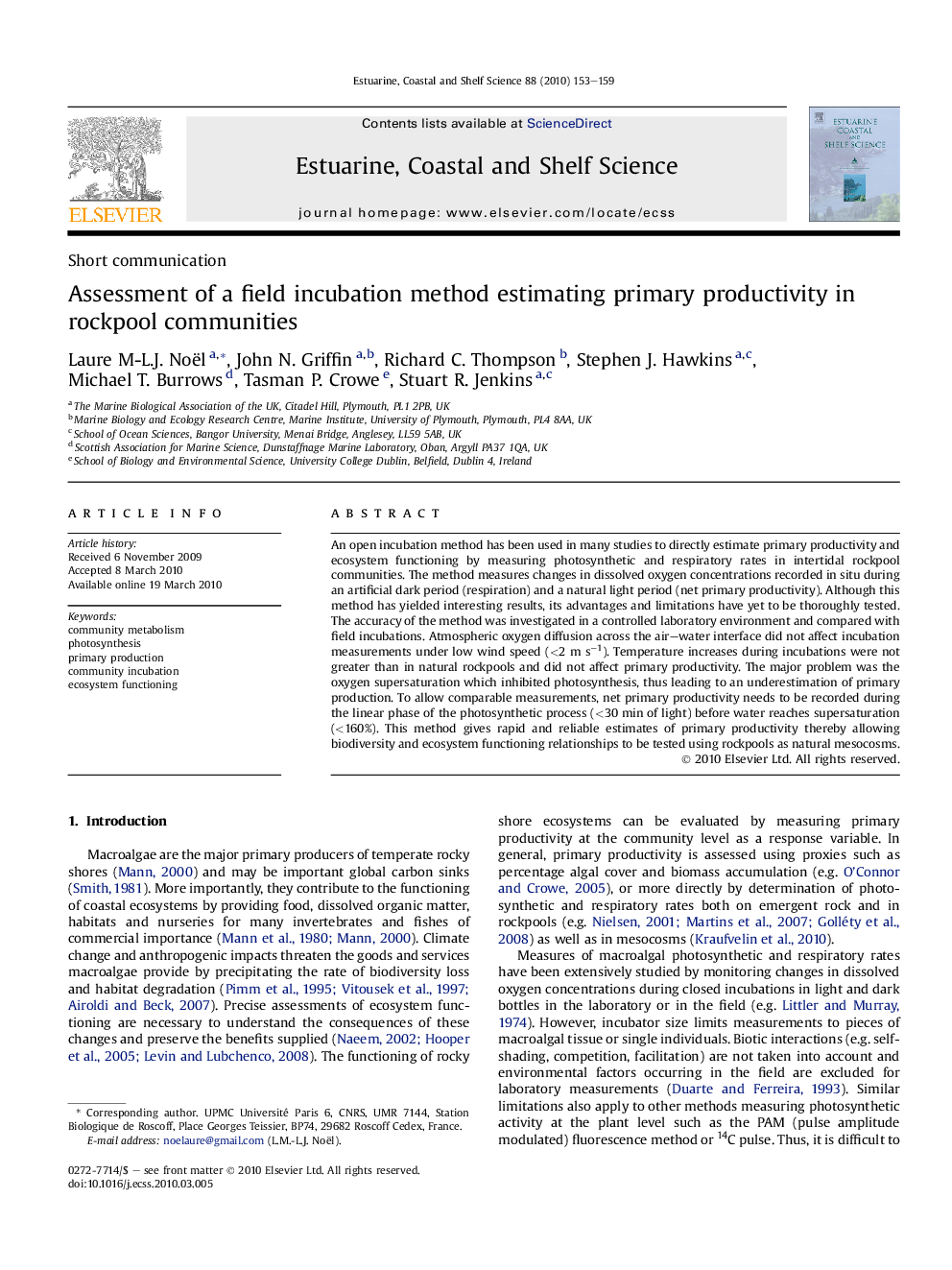| Article ID | Journal | Published Year | Pages | File Type |
|---|---|---|---|---|
| 4540886 | Estuarine, Coastal and Shelf Science | 2010 | 7 Pages |
An open incubation method has been used in many studies to directly estimate primary productivity and ecosystem functioning by measuring photosynthetic and respiratory rates in intertidal rockpool communities. The method measures changes in dissolved oxygen concentrations recorded in situ during an artificial dark period (respiration) and a natural light period (net primary productivity). Although this method has yielded interesting results, its advantages and limitations have yet to be thoroughly tested. The accuracy of the method was investigated in a controlled laboratory environment and compared with field incubations. Atmospheric oxygen diffusion across the air–water interface did not affect incubation measurements under low wind speed (<2 m s−1). Temperature increases during incubations were not greater than in natural rockpools and did not affect primary productivity. The major problem was the oxygen supersaturation which inhibited photosynthesis, thus leading to an underestimation of primary production. To allow comparable measurements, net primary productivity needs to be recorded during the linear phase of the photosynthetic process (<30 min of light) before water reaches supersaturation (<160%). This method gives rapid and reliable estimates of primary productivity thereby allowing biodiversity and ecosystem functioning relationships to be tested using rockpools as natural mesocosms.
